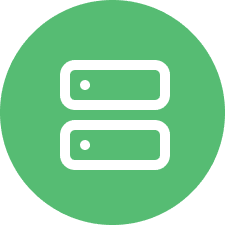9 Best HR Document Management Software in 2025
Trying to manage HR documents manually can feel like chaos. Streamlining your processes with the right HR document management software can save you time, reduce errors, and ensure compliance, all while providing a centralized hub for all your essential HR records.
To help you find the best solution for your business, we've curated a list of top HR document management software options for 2024. Among these, GoCo stands out as a leading choice, offering a comprehensive suite of features designed to streamline your HR processes and boost efficiency.

Why Does Your Business Need HR Document Management Software?
Relying on outdated methods for managing HR documentation in today's fast-paced business environment can stifle efficiency and expose your company to compliance risks. HR document software automates the organization and storage of critical employee records, ensuring smoother operations and reducing administrative burdens.
- Optimizing Efficiency: HR document software centralizes employee data, eliminating redundancies and streamlining access to essential records like contracts, performance reviews, and benefits paperwork. This automation speeds up processes such as onboarding, offboarding, and record updates, allowing HR teams to focus on strategic initiatives like talent development and workforce planning.
- Enhancing Compliance and Security: With ever-changing labor laws and privacy regulations, compliance is a growing challenge. HR document software ensures your company adheres to these legal requirements by automating document retention, access control, and audit trails. This not only reduces the risk of costly penalties but also safeguards sensitive employee information through advanced security measures.
- Improving Employee Experience: Modern HR software empowers employees by providing self-service access to their records, enabling them to view contracts, update personal information, or access benefits documentation without needing to go through HR. This level of transparency and autonomy can enhance employee satisfaction and engagement, fostering a more productive workforce.
- Supporting Data-Driven Decisions: Advanced HR document management systems come with reporting and analytics tools that allow companies to track key HR metrics, such as compliance status, document completion rates, and employee tenure. These insights enable better decision-making, helping companies align HR processes with broader business goals while improving overall workforce management.
With the right HR document software, businesses can optimize workflows, enhance compliance, and drive employee engagement, all while positioning themselves for future growth.
Keeping these in mind, let’s explore the top HR document software providers for 2025:
9 Best HR Document Management Software for Small Businesses
Best Software
- GoCo
- Zoho WorkDrive
- DocuSign
- PandaDoc
- Revver Docs
- DynaFile
- Box
- DocStar ECM
- DocuPhase
1. GoCo




Website: Visit GoCo
G2 Rating: 4.6 (387)
GoCo is a comprehensive HR platform designed to streamline HR document management for businesses. Its user-friendly interface and automation capabilities make it an ideal solution for companies aiming to reduce administrative workloads while enhancing efficiency. GoCo’s integration and customization features allow businesses to easily implement and tailor the platform to meet their unique HR needs.
GoCo’s HR Document Management Features Include:
- Centralized Document Storage: Store all employee records, such as contracts, performance reviews, and compliance documents, in a single, secure platform. GoCo ensures easy access for both HR teams and employees through a user-friendly dashboard.
- Document Automation: Automate document creation, distribution, and e-signing processes with GoCo’s Magic Docs. From onboarding to offboarding, GoCo streamlines paperwork handling, saving time and reducing errors.
- Compliance Management: Keep track of essential compliance documents and deadlines effortlessly. GoCo helps ensure you stay up-to-date with changing regulations with built-in compliance and resources.
- Employee Self-Service: Empower employees to access and manage their own HR documents, reducing HR inquiries and fostering greater transparency. Employees can securely access their documents, update personal information, and sign documents digitally.
GoCo offers competitive, transparent pricing plans designed for businesses of all sizes. With its scalable solutions, GoCo grows alongside your business, providing the tools and support needed to streamline HR operations and ensure compliance at every stage.
Best for: Companies seeking an all-in-one HR and document management solution that is intuitive, customizable, and built to evolve with their needs.
2. Zoho WorkDrive

Website: Visit Zoho WorkDrive
G2 Rating: 4.3 (225)
Zoho WorkDrive is ideal for businesses looking to streamline file storage, collaboration, and document workflows. It provides features to meet a variety of document management needs.
Zoho WorkDrive's Features Include:
- Centralized File Storage: Zoho WorkDrive allows you to organize and access files easily, with advanced search functionality and shared team folders.
- Collaboration Tools: Enable seamless collaboration with real-time file editing, comments, and sharing. WorkDrive supports internal teams and external stakeholders, ensuring smooth project collaboration.
- Automation and Workflows: Automate routine document processes, such as approval workflows, version control, and file-sharing permissions.
- Mobile Access: Access files anytime, anywhere with the Zoho WorkDrive mobile app, which allows employees to upload, edit, and share documents on the go.
Zoho WorkDrive offers pricing plans starting at $2.50 per user per month, with scalability options based on the storage and features required.
While Zoho WorkDrive offers extensive functionality, some users find that its interface can be complex, especially for those unfamiliar with cloud-based document management systems. The platform's customization options can also be overwhelming without technical expertise.
Best for: Small to medium-sized businesses with tech-savvy teams seeking a document management solution that enables collaboration, secure file storage, and process automation.
3. DocuSign

Website: Visit DocuSign
G2 Rating: 4.5 (2400)
DocuSign is an eSignature and document management platform that is ideal for businesses looking to digitize and streamline their document workflows. It offers a range of features that simplify the signing, sending, and management of agreements, making it a trusted solution for businesses of all sizes that are looking for a document management point-solution.
DocuSign's Features Include:
- eSignature: Securely sign documents from anywhere, on any device. DocuSign’s eSignature functionality is legally binding and compliant with major regulations such as ESIGN, UETA, and eIDAS.
- Templates and Automation: Create reusable document templates for frequently used forms. Automated workflows guide signers through the process, ensuring quick approvals.
- Document Tracking and Notifications: You can track the progress of your documents in real-time with status updates and automatic notifications, allowing you to know who has signed and who still needs to take action.
- Integration with Popular Tools: Integrate DocuSign with a wide range of business applications such as Salesforce, Google Workspace, Microsoft Office, and more, enabling a unified workflow.
While DocuSign offers powerful features, users often report that its pricing can be higher compared to competitors, especially for small businesses or startups. Business plans start at $25 per month per user for the Business Essentials plan and increase to $40 per user per month for Business Pro. Custom plans are also available.
In addition to its hefty price tag, Some users find the DocuSign interface overwhelming, particularly when using advanced features. The learning curve can be steep for new users who aren't familiar with document management tools. The response times for customer support can also be slow, especially during high-demand periods. Additionally, some advanced support options are only available on higher-tier plans.
Best for: Businesses of all sizes looking for an eSignature-focused or document management point solution with strong security, advanced workflow automation, and integration capabilities.
4. PandaDoc

Website: Visit PandaDoc
G2 Rating: 4.7 (2550)
PandaDoc is a document management point solution that streamlines the creation, tracking, and signing of business documents. Known for its user-friendly interface, it is a good choice for businesses looking to simplify workflows related to contracts, proposals, and quotes.
PandaDoc's Features Include:
- Document Creation: Create professional documents easily with PandaDoc’s drag-and-drop editor. Pre-built templates for contracts, proposals, and agreements allow businesses to quickly generate documents without starting from scratch.
- eSignature: PandaDoc offers legally binding eSignature functionality, making it easy for clients and internal teams to sign documents from any device. The platform ensures compliance with major electronic signature regulations like ESIGN and UETA.
- Automated Workflows: Set up automated approval and signing workflows, streamlining the document lifecycle.
- Tracking and Analytics: Track document progress with real-time analytics. Get insights into who opened the document, how much time they spent on each section, and whether they’ve completed any required actions like signing.
While PandaDoc is feature-rich, some users mention that the cost can become high as more features are added or as document volume increases, particularly for smaller businesses. Prices start at $19/user per month for the Starter Plan, going up to $49/user per month for the Business Plan. Custom enterprise packages can also be quoted.
Though generally easy to use, users have reported that the platform’s deeper features can take some time to fully understand and utilize effectively, especially for those unfamiliar with document management systems. Some users also note that while the desktop version is strong, the mobile app can be limited in functionality, especially for more complex tasks like editing or managing documents.
Best for: Sales teams, marketing professionals, and businesses looking for a platform primarily for business documents, such as those that frequently generate proposals, contracts, and quotes.
5. Revver Docs

Website: Visit Revver Docs
G2 Rating: 4.3 (371)
Revver Docs (formerly eFileCabinet) is a document management platform designed to streamline the storage, organization, and automation of business documents. Noted for its security features, Revver Docs helps businesses manage their documents efficiently while ensuring compliance with industry regulations.
Revver Docs' Features Include:
- Document Organization: Revver offers a cloud-based repository where businesses can securely store and organize all types of documents. Its folder templates and pre-configured structures help streamline the organization process and maintain consistency across teams.
- Automated Workflows: Automate repetitive tasks such as document approvals, routing, and filing with Revver’s workflow automation tools.
- eSignature Integration: Revver integrates with eSignature tools, enabling users to securely sign documents directly within the platform, which is ideal for contracts, forms, and legal agreements.
- Security and Compliance: Revver Docs prioritizes security with features like role-based permissions, encryption, audit trails, and document retention policies. This ensures compliance with industry regulations such as HIPAA, FINRA, and GDPR, making it a trusted solution for highly regulated industries.
While Revver doesn’t publish pricing, users report a minimum of $2,000 per year for two users, making it on the very high end of pricing, particularly for smaller businesses that may not need all the advanced features the platform offers.
In addition to its high price tag, some users have noted that while the platform is feature-rich, the user interface can feel outdated or unintuitive at times, especially when compared to more modern solutions. While the platform provides many out-of-the-box features, users have also reported that customization options for workflows and templates are more limited than they would prefer.
Best for: Businesses in highly regulated industries such as healthcare, finance, and legal that require a secure, compliant document management system.
6. DynaFile

Website: Visit DynaFile
DynaFile offers a suite of features to help teams store, organize, and retrieve files, making it a popular choice for industries like healthcare, human resources, and compliance that need to manage a high volume of documents. This platform focuses more on the actual actions of filing versus document editing or signing.
DynaFile's Features Include:
- Document Scanning and Storage: DynaFile simplifies the transition from paper to digital by offering advanced scanning tools. Users can scan directly into the system, automatically indexing documents with customizable metadata for easy retrieval.
- Workflow Automation: Automate document-driven processes such as approval workflows, task routing, and notifications.
- Compliance and Security: DynaFile ensures that businesses remain compliant with industry regulations such as HIPAA and SOC 2. Features like audit trails, role-based access control, and document retention schedules protect sensitive data and meet strict compliance standards.
- Advanced Search and Organization: DynaFile provides users with strong search capabilities, allowing them to locate documents quickly using keywords, tags, or metadata. The system’s folder structure can be customized to fit unique business needs.
Dynafile’s pricing is on the higher side, starting at $799/mo on a per-user basis. Customers must contact Dynafile directly to get customized pricing.
While DynaFile is highly functional for scanning documents to the cloud system, some users report that the interface can feel outdated compared to more modern document management systems. This can result in a learning curve, especially for new users.
A few users also mention that while the platform offers key features, more extensive customization options, especially for highly specialized business processes, can be limited without external help or development resources. Another shortcoming to note is that Dynafile’s mobile experience is limited.
Best for: Highly-regulated businesses that handle a large volume of documents, particularly in healthcare and industries that require stringent compliance. It’s best suited for organizations looking to digitize their paper records and ensure secure, compliant document management practices.
7. Box

Website: Visit Box
G2 Rating: 4.2 (4952)
Box is a cloud-based content management and collaboration platform designed to help businesses securely store, manage, and share files. With a focus on collaboration and secure file sharing, Box is popular among organizations in industries that require strict data security and compliance.
Box's Features Include:
- Cloud Storage and File Sharing: Box offers secure cloud storage with advanced file-sharing capabilities. Users can store, access, and share files from any device, enabling seamless collaboration across teams and locations.
- Collaboration Tools: Real-time collaboration features allow teams to co-edit documents, leave comments, and track changes directly within Box.
- Workflow Automation: Box’s automated workflows, called Box Relay, help streamline repetitive tasks like document approval, contract routing, and content reviews. Users can set up custom workflows to ensure documents move through approval processes efficiently and consistently.
- Security and Compliance: Box is built with enterprise-grade security features such as encryption, advanced permissions, data loss prevention (DLP), and comprehensive audit trails. Box also complies with strict regulatory standards such as HIPAA, GDPR, SOC 2, and FINRA, making it a trusted solution for highly regulated industries.
Box has tiered pricing that starts at $15/user per month for the Business plan and goes up to $50/user per month for the Enterprise Plus version. While Box offers a robust set of features, some users note that its pricing is on the higher side, particularly for smaller businesses or startups that may not require the full range of enterprise features.
Due to its extensive feature set, some users report that Box can have a steep learning curve, especially when setting up workflows or managing permissions. New users may require extra training to fully utilize the platform’s capabilities. A few users have also mentioned occasional issues with file syncing across devices, particularly when dealing with large files or a high volume of documents.
Best for: Large enterprises looking for a content and document management solution that focuses on collaboration and file sharing.
8. DocStar ECM

Website: Visit DocStar ECM
G2 Rating: 3.8 (121)
Another option for HR document management is DocStar ECM (Enterprise Content Management), which is a document management and process automation platform designed to help businesses digitize, organize, and streamline their document workflows. The platform is a general content management software with modules specific to file management. Again, this is more of a point-solution than a comprehensive HRIS, but it still offers intuitive document capture and imports.
DocStar ECM's Features Include:
- Document Capture and Indexing: DocStar ECM simplifies the process of digitizing paper documents through advanced scanning and automated indexing tools. Documents can be categorized using metadata, making them searchable and organized.
- Workflow Automation: Automate complex business processes, such as document approvals, routing, and notifications. This helps reduce bottlenecks, improve efficiency, and minimize manual intervention in document-related tasks.
- Collaboration Tools: Enable secure collaboration on documents with features like version control, check-in/check-out functionality, and document sharing.
- Analytics and Reporting: Gain insights into document workflows and system performance with built-in reporting tools.
DocStar ECM has custom pricing that is not published, but users report that it is on the higher end. Some users feel that the cost can be a barrier when compared to other document management systems with similar feature sets.
While the system is feature-rich, a number of users have noted that there is a steep learning curve, especially when setting up advanced workflows and custom processes. Training is often required to maximize the platform's functionality. Some users also report that the interface can feel dated and that it may not be as intuitive as other modern document management systems, particularly for new users or those less familiar with ECM platforms.
Best for: Mid-sized to large enterprises that need to automate document-heavy workflows, particularly in industries with stringent compliance requirements, such as manufacturing, healthcare, insurance, and finance.
9. DocuPhase

Website: Visit DocuPhase
G2 Rating: 4.4 (29)
DocuPhase is an automation-focused document management and business process management (BPM) platform designed to streamline document workflows and improve operational efficiency. With a heavier focus on accounting processes, DocuPhase can be a helpful document management tool for HR-related accounting files. The automation solution provides helpful tools for simplifying digital filing and employee data management.
DocuPhase's Features Include:
- Document Management: DocuPhase provides secure, centralized storage for documents, making it easy to organize, retrieve, and manage files with advanced search and tagging capabilities.
- Intelligent Data Capture: DocuPhase includes advanced optical character recognition (OCR) technology, allowing businesses to capture data from scanned documents automatically.
- Integration with Other Systems: DocuPhase integrates with a variety of popular enterprise systems, including accounting, ERP, CRM, and HR platforms.
- Analytics and Reporting: Built-in analytics and reporting tools allow businesses to track and analyze workflows, identify inefficiencies, and measure performance.
DocuPhase offers custom quotes and doesn’t publish pricing. However, a few reviewers have mentioned that DocuPhase’s pricing can be on the higher side, especially for smaller businesses. The cost may be a consideration for those who do not require the full range of automation and BPM features.
While DocuPhase is powerful, many users report a steep learning curve, especially for those unfamiliar with automation tools. Setting up complex workflows and configuring custom features may require training or assistance from support. Some users also feel that the interface could be more intuitive, particularly when navigating between different modules or configuring settings.
Best for: Large businesses in industries that require process automation, such as accounting, finance, healthcare, and legal. It’s a good option for organizations looking to digitize document-heavy workflows and improve overall operational efficiency.
How to Choose the Best HR Document Management Software for Your Business
Efficient HR document management is essential for business success. The right software not only helps maintain compliance but also streamlines HR processes and improves the employee experience.
When selecting HR document management software, look beyond basic file storage. Consider additional features like automated document workflows, employee self-service access, and compliance management tools to optimize efficiency and reduce administrative burdens.
Start by defining your business’s specific needs. Evaluate platforms based on their ability to centralize document storage, automate key processes, and integrate with existing HR tools like payroll, benefits, and performance tracking. Some companies may benefit from an all-in-one HRIS, while others might prefer modular systems that allow customization and integration.

Critical Factors to Consider When Choosing HR Document Management Software
Selecting the right HR document management software is a strategic decision that can significantly improve your business's operational efficiency and compliance. While organizing and storing employee records is crucial, modern HR software should offer much more—streamlining document workflows, enhancing data security, and providing a solid return on investment.
If you’re unsure which HR document management solution is best for your business, focus on these key factors:
-
 Company Size and Complexity: The number of employees and the complexity of your HR operations should guide your choice. Larger businesses may need robust solutions with advanced customization, while smaller companies may prioritize simplicity and ease of use in managing employee records and compliance documents.
Company Size and Complexity: The number of employees and the complexity of your HR operations should guide your choice. Larger businesses may need robust solutions with advanced customization, while smaller companies may prioritize simplicity and ease of use in managing employee records and compliance documents.
-
 Automation Capabilities: Look for software that automates critical HR processes, such as document creation, distribution, e-signatures, and compliance tracking. Automation saves time, reduces errors, and ensures timely completion of HR tasks.
Automation Capabilities: Look for software that automates critical HR processes, such as document creation, distribution, e-signatures, and compliance tracking. Automation saves time, reduces errors, and ensures timely completion of HR tasks.
-
 Budget and ROI: While staying within budget is important, consider the long-term return on investment. Factor in savings from reduced administrative workloads, improved compliance, and minimized risk of penalties due to errors or missed deadlines.
Budget and ROI: While staying within budget is important, consider the long-term return on investment. Factor in savings from reduced administrative workloads, improved compliance, and minimized risk of penalties due to errors or missed deadlines.
-
 Training and Support: Evaluate the level of training and ongoing support needed for your team to adopt the software. Comprehensive onboarding and responsive customer support can ensure a smooth transition and maximize the platform’s benefits.
Training and Support: Evaluate the level of training and ongoing support needed for your team to adopt the software. Comprehensive onboarding and responsive customer support can ensure a smooth transition and maximize the platform’s benefits.
-
 Integration with Existing Systems: Seamless integration with your existing HR tools, payroll systems, and benefits platforms is crucial. This ensures data flows smoothly between systems, reducing duplication and improving operational efficiency.
Integration with Existing Systems: Seamless integration with your existing HR tools, payroll systems, and benefits platforms is crucial. This ensures data flows smoothly between systems, reducing duplication and improving operational efficiency.
-
 Scalability: As your business grows, your HR needs will evolve. Choose software that can scale with you, offering additional features or modules as your company expands. This ensures the platform remains effective as your HR operations become more complex.
Scalability: As your business grows, your HR needs will evolve. Choose software that can scale with you, offering additional features or modules as your company expands. This ensures the platform remains effective as your HR operations become more complex.
GoCo offers a modern all-in-one HR platform designed to simplify the complexities of HR document management. By consolidating HR functions, payroll, onboarding, benefits, and more into a single solution, GoCo eliminates the need to juggle multiple software systems with the adaptability to scale along with your business.
With features like electronic forms, provider management, employee databases, and self-service portals, GoCo streamlines HR processes and provides a comprehensive toolkit and support to set businesses up for success.
Want to see GoCo’s HR software features for yourself? Book a demo today and discover how GoCo can revolutionize your HR document management, enabling you to focus on what matters most — your people.
See how GoCo can simplify your HR
Book a Demo →FAQs
What does HR document management software do?
HR document management software centralizes the storage and automation of HR documents, streamlining tasks like document creation, approvals, and compliance tracking. It enhances efficiency, ensures legal compliance, and provides secure access to sensitive employee records.
What features should I look for in HR document management software?
Key features include automated document workflows, compliance management tools, employee self-service portals, secure storage, e-signatures, and integrations with existing HR systems like payroll, benefits, and performance tracking.
How can automation help my HR department?
Automation reduces manual tasks like document storage, retrieval, approvals, and compliance tracking. This boosts efficiency, reduces human error, and ensures that tasks are completed on time, improving overall productivity.
How do I choose between an all-in-one HRIS and a point solution?
If you want a fully integrated system that handles all HR tasks, including document management, an HRIS is ideal. However, if your business has complex document management needs, a modular or point solution may be better.
Search...
Product
GoCo
Resources
Articles
eBooks
Webinars
Customer Stories